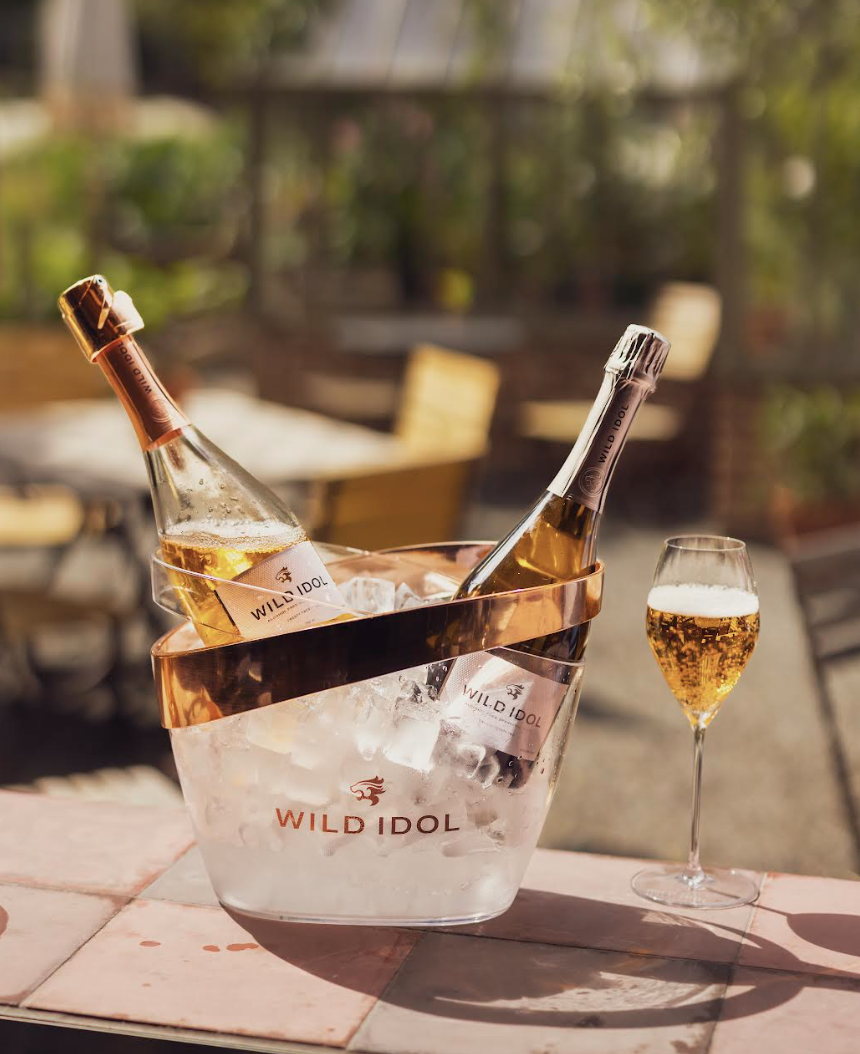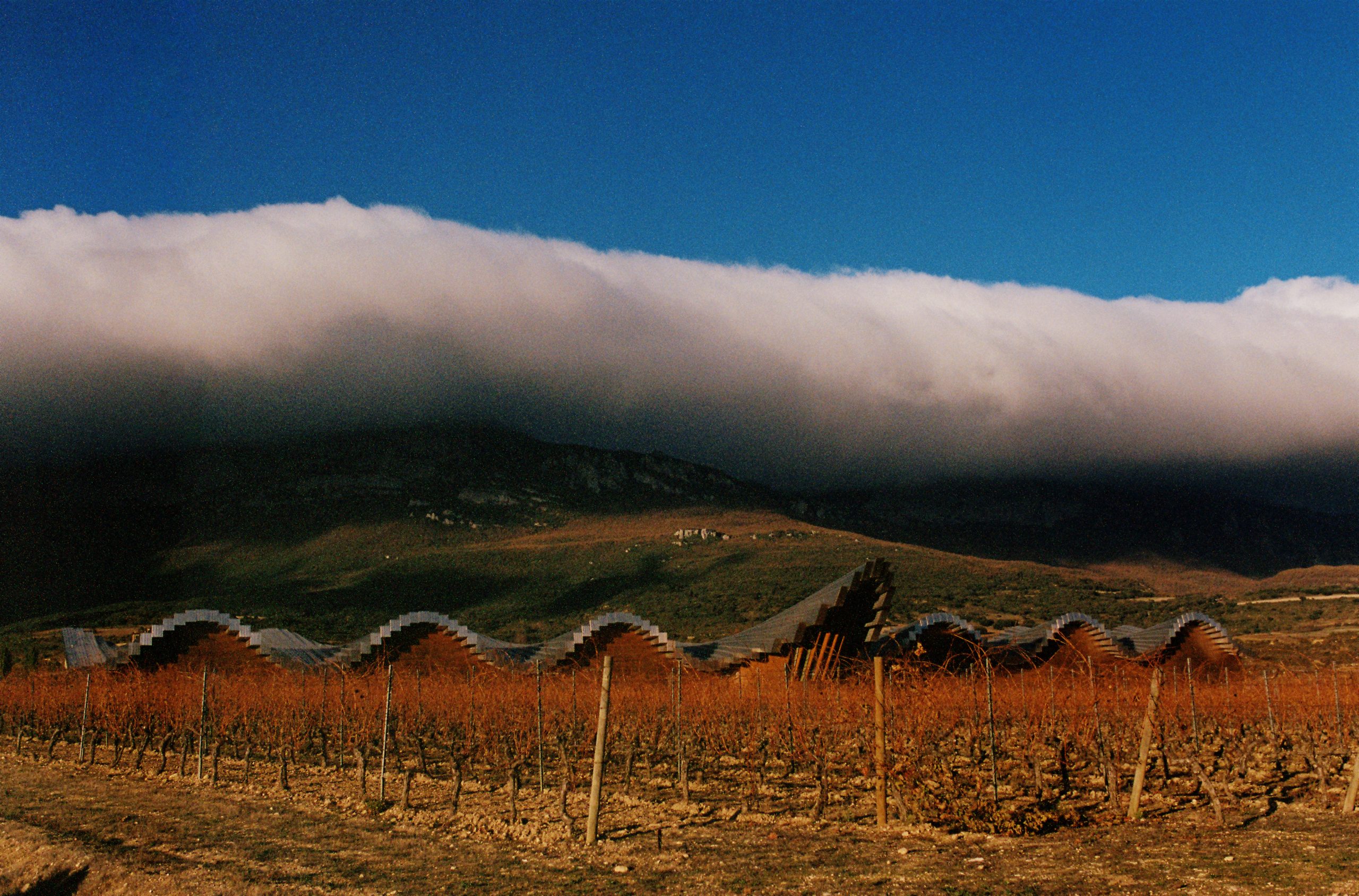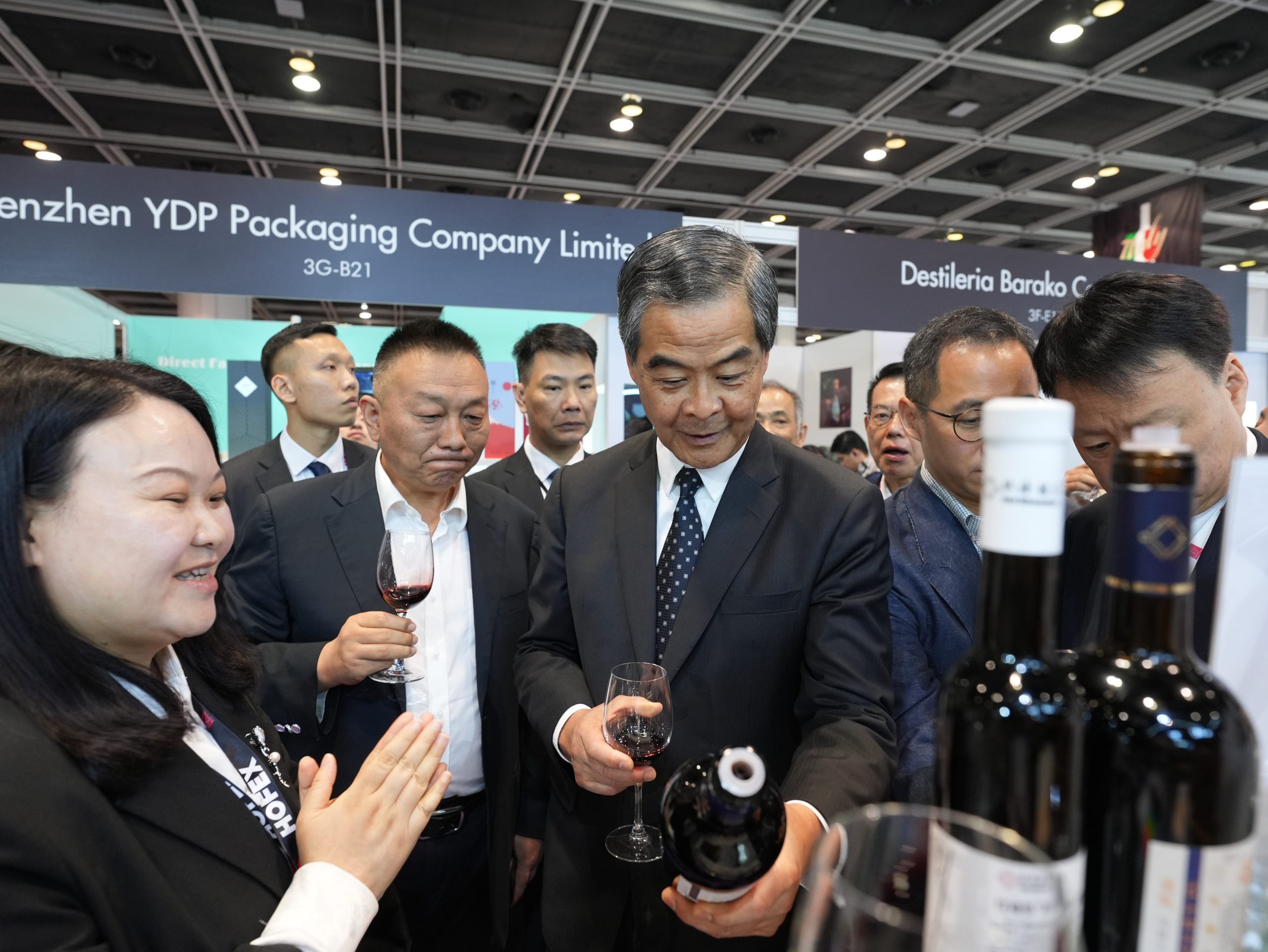Rioja – Cool Espana
Forget Cool Britannia, these days it’s more like Cool España. Can Rioja convert the British obsession with Spanish food and lifestyle into valuable branded business? It certainly needs to, says Robyn Lewis
Forget Cool Britannia, these days it’s more like Cool España, as Spanish food and wine colonises the British high street. Chicken tikka masala might be the national dish these days but how long before the patatas bravas usurps curry, as tapas restaurants – chains like La Tasca – permeate the country? London is seemingly already awash with Spanish eateries of every description, within 10 minutes of the db offices there are more than three decent tapas restaurants and one Spanish deli.
Even Sherry, so long the preserve of old ladies at Christmas, is managing the arduous journey from “naff beyond all belief” into “too cool for school” territory – though, let’s be fair about this – it is slow progress. Of course, this is not just good news for the jamon importers either; the growth in popularity of all things Spanish is something that Spanish wine can make the most of as well. And by Spanish wine most British consumers understand Rioja.
The dominance of this DOC in the Spanish sector is uncontested thus far. It is by far the strongest name to emerge from Spain (indeed one of the strongest from the Old World) and is one of the few wine brands, be they product brands or regional ones, that consumers can spontaneously recall and recognise. From this enviable position Rioja is looking in rather good shape, as the stats show.
The export figures to the UK demonstrate a clear rise in Reserva, up from 3.6m litres in 2004 to 4.8m in 2005 (figures January to October 2005, courtesy of the Riojan Exporters Group) and Gran Reserva, up from 465,000 litres to 698,000 litres.
There is no doubt, of course, that selling more of a top-end product is a good thing, but in this case the benefit is off-set by the fact that it seems most of the Reserva and Gran Reserva sales have been on promotion through the multiple grocers in the off-trade – more of this later. Such deep discounting obviously has its dangers, well documented in db over the years, and does not bode well for long-term value growth in the category.
Continuing the off-trade analysis, TNS Worldpanel statistics show that Rioja continues to increase its sales in terms of volume (up 30% year on year) and value (up 32.8% year on year) which, since the price per litre has risen only by 2.2% year on year, would seem due to a growth in popularity and a 13.1% increase in frequency of purchase. Perhaps less good news, however, is the continuing dominance of buyers’ own brands (BoBs) to the category.
TNS shows the top 10 Rioja brands ranked by penetration (see chart) which is dominated by the supermarket own labels – Tesco Finest is ranked at number one, Asda at three, Sainsbury’s at four, Marks & Spencer at six, Tesco at seven, Lidl at eight with Somerfield (nine) and Co-op (10) bringing up the rear. In fact, the only other brands to make the chart are Campo Viejo (two) and Faustino (five). Though perhaps producers can take comfort from the fact that Andrew Russell of TNS Worldpanel reports that, “Campo Viejo has experienced the most dramatic increase in numbers of people purchasing the brand, far ahead of the market, while Tesco wine appears to have suffered the greatest loss in popularity, falling from second place to seventh.”
Quality improvements
Both this reliance on deep discounting at Reserva and Gran Reserva level and the proliferation of BoBs must cause concern in the vineyards of Rioja and at the offices of the importers in the UK. “The quality in the Gran Reserva category in particular has in general improved over the last few years and Faustino has done some good work in this area,” comments Alex Canneti, of agents PLB. “It appears that more Rioja is being matured in oak and Gran Reserva is increasingly the most successful of its type above £10. However, I would also say that probably the biggest challenge Rioja faces now is to carry on increasing sales in this and the Reserva categories without relying too much on BOGOFs.”
These are challenges that face all Rioja producers, particularly with the heavy skew to off-trade sales that the category has. “The latest figures we have confirm that approximately 70%-80% of sales are through this channel and 20%-30% through the on-trade,” confirms Cristina Forner, CEO, Marqués de Cáceres. “For our particular brand however, the on-trade is especially important, with the majority of our sales channelled through this market. We see it as an important sector for the development and consolidation of good value and higher priced Riojas.”
And this is an approach others too are beginning to adopt. “Rioja definitely needs to be stronger in the on-trade,” says Carlos Latas, export director, of Bodegas Paternina. “I think that it is a growing opportunity, thanks to the increasing interest in Spanish food.”
Likewise, over at United Wineries, Bill Rolfe, international marketing director for the company, explains, “When it comes to brand building the on-trade is very important. To build a true individual brand you need both on- and off-trade distribution. A brand should not be measured just on volume, it should include breadth of distribution.” There are pit-falls in targeting the on-premise as well, of course. “Many of the on-trade multiples don’t care about quality, only about maximising their margin, so they buy the cheapest Rioja they can find,” laments Rolfe. This, of course, will do very little for the cause of pushing higher priced, higher quality Riojas in order to build value in the UK market.
Quality, in fact, is something of a buzzword in Rioja these days. Many have been working hard to rid the region of its image of cheap wine, high yields and poor quality – both at vineyard and marketing level. The British arm of the Riojan Exporters Group is obviously keen to emphasise this along with the burgeoning branding and business culture that is developing in the region.
“We feel that one of Rioja’s key strengths is the number of strong, well-financed companies with a deep knowledge of the international wine business and the muscle to deal with the increased strengths of the multiples,” explains UK spokesperson, for the Rioja Regulatory Council, Thomas Perry. “In our discussions with the international division directors of these wineries it has been made clear that, while they are willing to do business with the multiples, their clear focus has been on promoting their own brands.
Increasing visibility
The visibility and image of such brands as Campo Viejo, El Coto, Faustino, Marqués de Cáceres and Marqués de Riscal is growing and this is good for Rioja as a whole. In the UK now we have excellent brand recognition, shelf-visibility and a critical mass to be a force in the market place,” says Perry.
Partner Content
This is an interesting point, the advantages, and disadvantages, that the currency of brand Rioja can bring to individual brands. “Rioja is one of the few styles of wine that comes up in consumer research, along with Chianti, Chablis and Chateauneuf du Pape, everything else tends to be brands or grape varieties,” notes Jeremy Rockett of Gonzalez Byass UK. “It is, therefore, in a very strong place as a brand, which is a huge advantage. On the down side, consumers are generally uninterested in the exact origins – not all are even sure if it is even Spanish – and many believe Rioja is either a brand name or a grape variety. Another disadvantage is the use of words like Joven and Crianza, terms that are not understood by most consumers,” says Rockett.
The other disadvantage of brand Rioja, as Rockett goes on to point out, is the emerging threat from other Spanish wine regions: “As more producers are able to make New World style wines under the Vinos de la Tierra designation, those who tend to be loyal to Spanish wine will have excellent quality alternatives, often at lower prices.”
Julian Falk MW, wine development director at Halewood International, echoes this: “Brand Rioja has to keep a close eye on other areas in Spain that are now producing wines specifically for the UK market, softer and with big commercial appeal that will certainly take shelf space from Rioja. There is also the challenge to fend off cheaper brands carrying the Rioja name on the supermarket shelves.”
For many, these two threats sum up why the emphasis in the category must now be on a move away from the traditional volume building to brand and value growth instead. “We must continue to invest and make room for more brands in the sector if we are to recover share from the New World, in particular,” urges Bill Breen, managing director of Codorníu UK/Ireland. “Brands are important if you have a lot of wine to sell and you want to make money!”
New styles
The decline in the Spanish domestic market has underlined this and many producers are now concentrating not only on getting the styles of wine right for the important export markets but are also looking to introduce consumers more to other styles of Rioja, as Juliet Maurice, trade marketing manager, agency wines at Laurent Perrier succinctly puts it: “Our main challenge is to get consumers to turn to the category not just for their red wines but for their whites and rosés too.”
For many it is the few, more established brands that can take the initiative here, as is happening at Faustino. “It’s our aim to also introduce consumers to white Rioja too,” confirms Terry Barker at UK agent, Cellar Trends. “We know from events we have exhibited at that consumers are very reassured to see Faustino. While consumers are getting more adventurous we find they do like the re-assurance of a brand.” And the importance of the UK market to the brand increases the importance of strategies such as this. “The UK continues to be the number-one export market for Faustino and now tops Faustino’s 65 markets worldwide,” says Barker. “I think it will remain Rioja’s biggest market until the US switches its interest to Spanish wines.”
So working with UK consumers and giving them what they want, remains of the utmost importance to the category. The problem is, many UK consumers (as brand managers all over the world can tell you) tend to want quality wine for not very much money. The challenge is whether or not the Rioja producers can build on the current trend for all things Spanish and translate this into brand sales, a growth in value and long-term development. The danger is that they will instead go for volume and short-term profits.
db February 2006
UK RETAILERS
With the UK market, and the off-trade category within that, of significant importance to the Rioja category, we asked analysts TNS to look at the retailer share of Rioja sales in the UK. And they came up with some interesting results.
Tesco is by far and away the most significant retailer for the category with 40% share of trade, down 4% on 2004. Sainsbury’s, on the other hand, increased its share of trade by 4% in 2005, now reaching 24% share of trade. Morrisons showed the largest loss of trade, however, down from 12% last year to just 5% in 2005.
“Tesco was the key retailer for sales of Rioja last year, despite under-performing within the market,” explains Andrew Russell of TNS Worldpanel. “Waitrose has clearly been over-performing, experiencing the greatest increase in share over the past two years. Although off a much smaller base, Waitrose still contributed to 14% of growth within the
total market.”
Rioja brands ranked by penetration
1 Tesco Finest Wine
2 Campo Viejo Wine
3 Asda Wine
4 Sainsbury’s Wine
5 Faustino Wine
6 Marks & Spencer Wine
7 Tesco Wine
8 Lidl Wine
9 Somerfield Wine
10 Co-op Wine
Source: TNS Worldpanel
db February 2006




